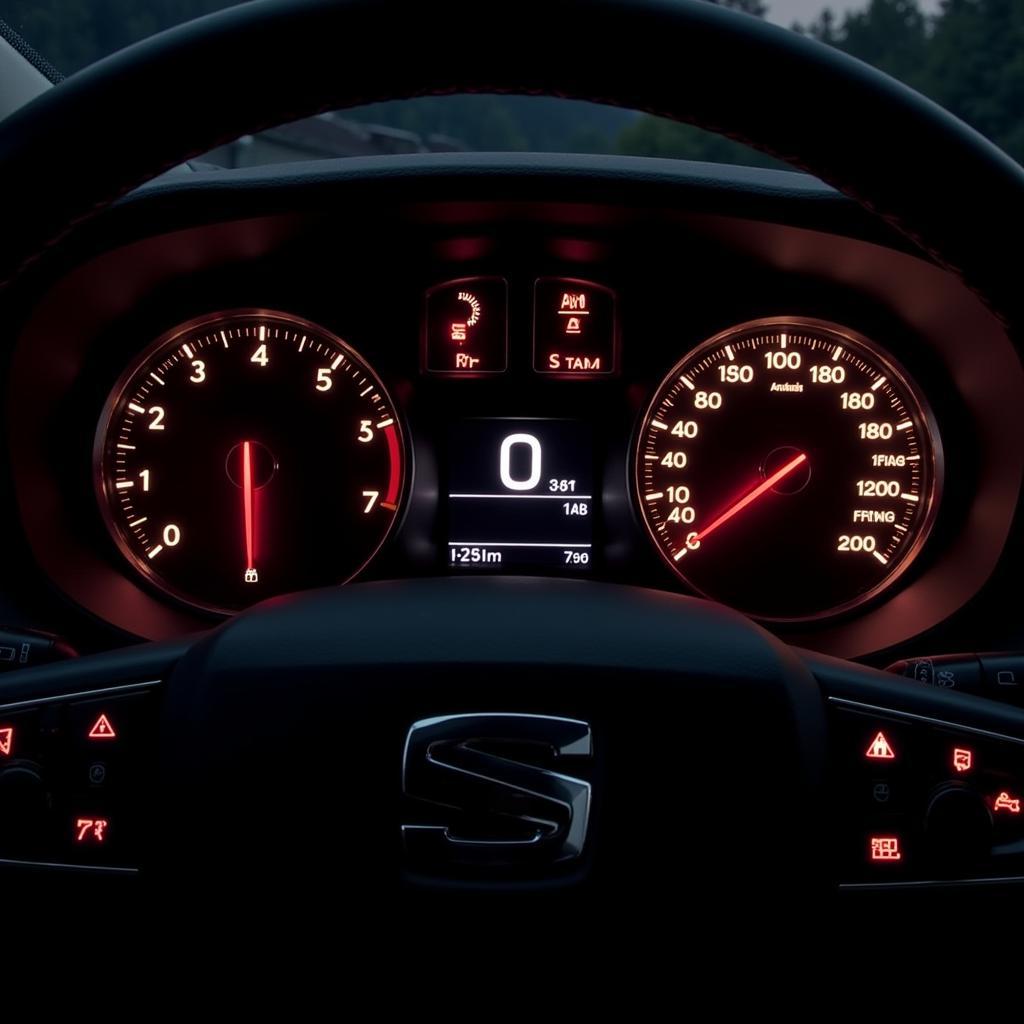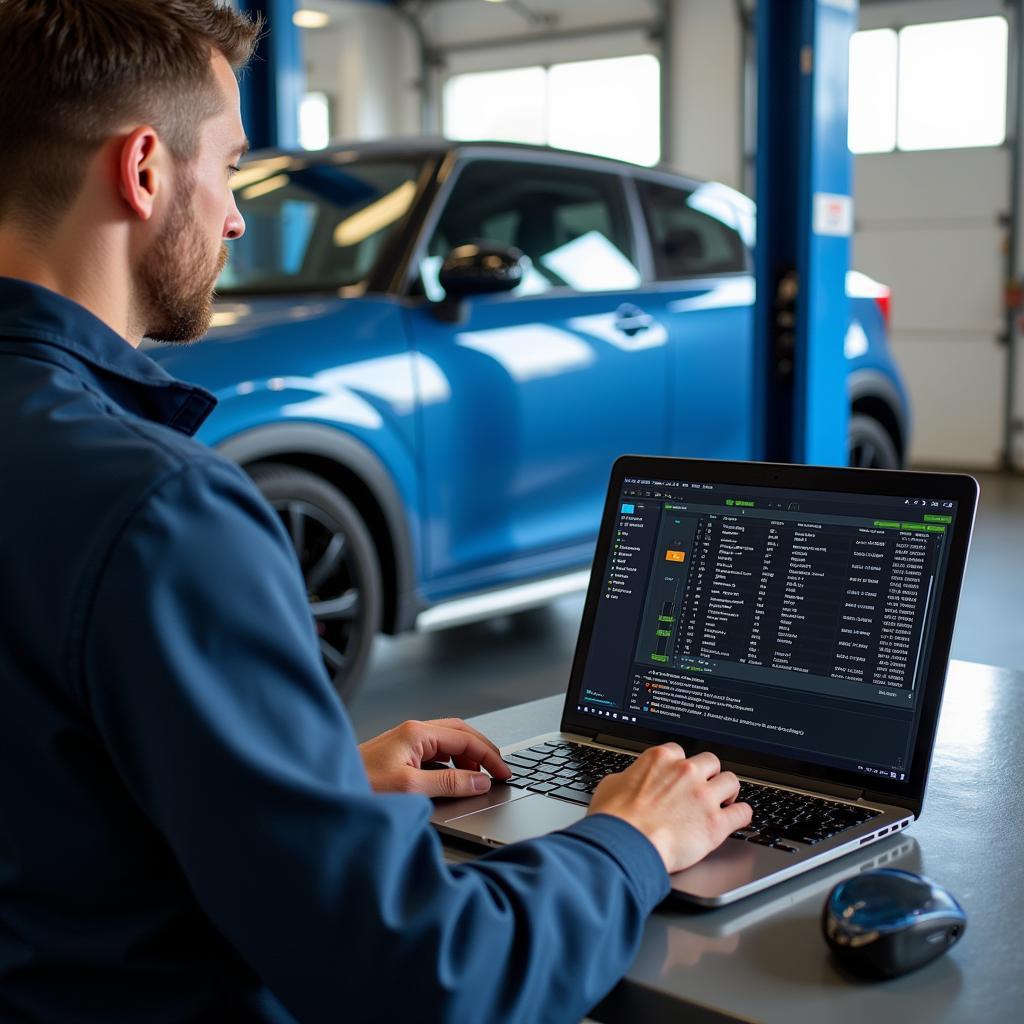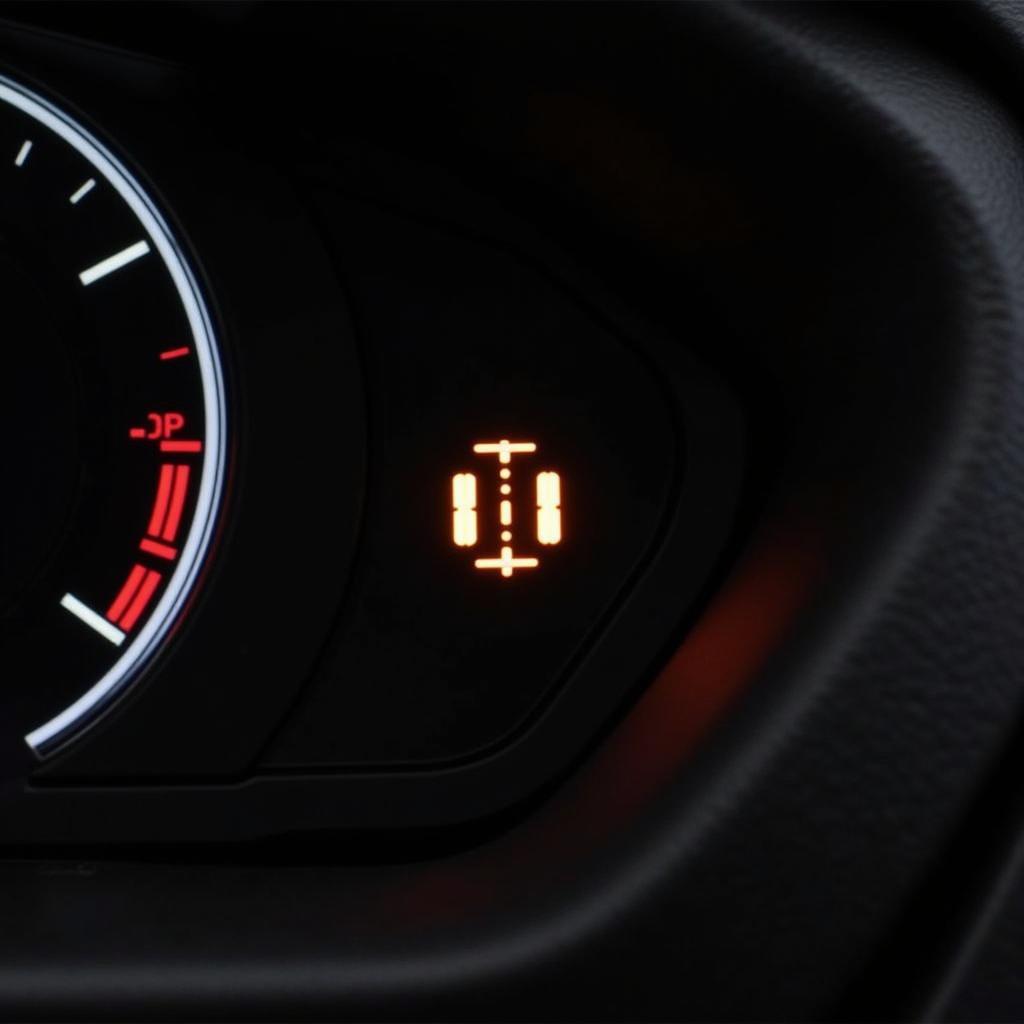The Seat Altea, a popular choice among car enthusiasts, is known for its stylish design and reliable performance. However, like any vehicle, it can occasionally display warning symbols on the dashboard, leaving drivers puzzled and concerned. This comprehensive guide delves into the world of Seat Altea warning symbols, providing you with the knowledge to decipher their meanings and take appropriate action.
Understanding Your Seat Altea Dashboard
The dashboard acts as the car’s central communication hub, displaying crucial information about your vehicle’s health and performance. While some warning lights are simply reminders, others indicate potential issues that require immediate attention. Ignoring these warnings can lead to further damage, costly repairs, and even compromise your safety on the road.
Common Seat Altea Warning Symbols and Their Meanings
 Seat Altea Warning Lights
Seat Altea Warning Lights
Engine Warning Light
This symbol, often resembling an engine block, illuminates when the engine control unit (ECU) detects a problem within the engine management system.
Possible causes:
- Faulty spark plugs
- Clogged air filter
- Malfunctioning oxygen sensor
Recommended action:
Schedule an appointment with a qualified mechanic for a diagnostic check as soon as possible.
Oil Pressure Warning Light
Represented by an oil can with a droplet, this light signals low oil pressure, which can severely damage the engine.
Possible causes:
- Insufficient oil level
- Worn-out oil pump
- Oil leak
Recommended action:
Stop driving immediately and check the oil level. If low, add oil as needed. If the light persists, seek professional help.
Battery Charge Warning Light
This symbol, depicting a car battery, indicates a problem with the charging system.
Possible causes:
- Loose or corroded battery terminals
- Failing alternator
- Worn-out alternator belt
Recommended action:
Have a mechanic inspect the battery, alternator, and belt for proper function.
Brake System Warning Light
This alarming symbol, often an exclamation mark within a circle, warns of a potential issue with the braking system.
Possible causes:
- Low brake fluid level
- Worn brake pads
- Problem with the ABS (Anti-lock Braking System)
Recommended action:
Check the brake fluid level and top it up if necessary. If the light remains on, avoid driving and contact a mechanic.
Coolant Temperature Warning Light
This symbol, resembling a thermometer immersed in liquid, indicates the engine is overheating.
Possible causes:
- Low coolant level
- Faulty thermostat
- Leaky radiator
Recommended action:
Pull over safely and let the engine cool down. Check the coolant level and top it up when the engine is cold. If the problem persists, seek professional assistance.
Tire Pressure Monitoring System (TPMS) Warning Light
This symbol, depicting a tire with an exclamation mark, signals low tire pressure in one or more tires.
Possible causes:
- Punctured tire
- Slow leak
- Temperature-related pressure change
Recommended action:
Check the tire pressure of all tires and inflate them to the recommended level. If the light remains on, have the tires inspected for punctures.
Utilizing Remote Diagnostics for Efficient Troubleshooting
 Remote Vehicle Diagnostics
Remote Vehicle Diagnostics
Advancements in automotive technology have paved the way for remote diagnostics, allowing mechanics to access a vehicle’s data remotely and identify issues without physical inspection. This innovative approach offers numerous benefits, including faster diagnosis, reduced downtime, and potential cost savings. If your Seat Altea displays a warning symbol, consider contacting a remote diagnostics service for prompt assistance.
“Remote diagnostics is revolutionizing the way we diagnose and troubleshoot vehicle problems,” says John Smith, Senior Automotive Engineer at CARDIAGTECH. “This technology empowers us to provide faster and more efficient solutions to our customers, minimizing inconvenience and maximizing vehicle uptime.”
Conclusion
Understanding your Seat Altea warning symbols is crucial for maintaining your vehicle’s health, ensuring your safety, and avoiding potential breakdowns. Familiarize yourself with the meanings of these symbols and take appropriate action when they appear. Remember, addressing warning signs promptly can save you time, money, and potential headaches down the road.
Pro Tip: Keep a record of any warning lights you encounter, along with their frequency and duration. This information can be valuable for mechanics during diagnosis.
FAQs
Q1: What should I do if multiple warning lights illuminate simultaneously?
A: If you encounter multiple warning lights appearing together, it’s crucial to stop driving immediately and seek professional help. This could indicate a serious underlying issue requiring immediate attention.
Q2: Can I continue driving with the engine warning light on?
A: While it’s not advisable to ignore the engine warning light, the urgency depends on its behavior. If it’s flashing, stop driving immediately. If it’s steadily lit, schedule a mechanic appointment as soon as possible.
Q3: How often should I check my tire pressure?
A: It’s recommended to check your tire pressure at least once a month and before long journeys. Maintaining proper tire pressure ensures optimal fuel efficiency and safe handling.
Q4: Can extreme temperatures affect the TPMS warning light?
A: Yes, extreme temperatures can cause fluctuations in tire pressure, potentially triggering the TPMS warning light. Always check your tire pressure when temperatures fluctuate significantly.
Q5: How can I find a reliable mechanic specializing in Seat vehicles?
A: Refer to your owner’s manual or consult online directories for authorized Seat service centers or reputable independent mechanics specializing in your vehicle model.


